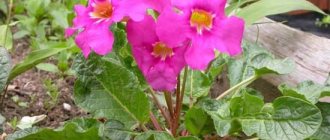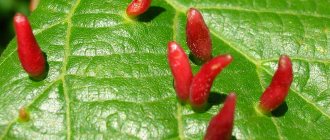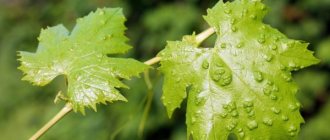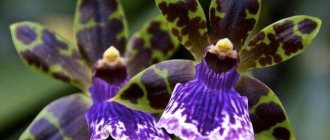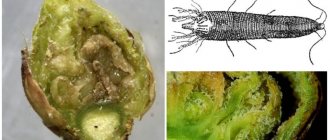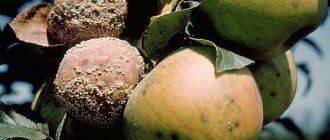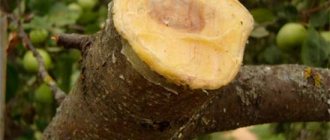One of the most malicious enemies of plants, and orchids are no exception, considered to be a spider mite. The fertility and gluttony of this microscopic pest cause significant damage to the plant.
can cause irreparable damage in a short period of time if the plant is not protected in a timely manner. Below we will tell you in detail what a gardener should do if a spider mite appears on his orchid.
Description of the spider mite
Pest type
Spider mites (Tetranychus urticae) belong to the arachnids of the arachnid family. The family is so numerous (more than 1000 species) that its distribution is widespread, with the exception of Antarctica. Below in the photo you can see a common type of spider mite.
Spider mites belong to the arachnid family.
It is quite difficult for a gardener to detect, due to its very small size . Even a well-fed tick does not exceed 0.5 mm, and they:
- Soft-bodied;
- With a convex upper part and a flat lower part;
- Ellipsoidal type.
The color, depending on the stage of development, changes noticeably. The larvae themselves :
- Transparent;
- With dark spots on the sides.
Depending on the culture, their color ranges from light green to green-brown. Unlike the adult pest, which has 4 pairs of legs, the larvae have 3 pairs .
The color of spider mites varies, but on orchids they are usually green or red. Sometimes white mites are also found.
Unlike most insects, spider mites do not have antennae, but they do have strong, heart-shaped jaws and two stylets that help them bite into dense leaves.
Features of life
A feature of such pests is the ability to weave webs . This is the reason for the name. Another representative, Tenuipalpus pacificus or red mites, called false mites, do not spin webs, so they are very difficult to detect. Its other name is false mites.
Attention! The main location of spider mite colonies is the inside of the leaf, so the presence of the pest cannot always be detected visually.
With their strong jaws, they bite through the leaf plate to feed on juice. He injects a special substance, which, penetrating into the cells of the leaf membrane, forms juice, which is the main food of the malicious pest .
As a result, the sheet begins :
- turn yellow;
- Small translucent dots appear on it;
- And in a short time the leaf dries out completely.
After the spider mite appears, the orchid's leaf begins to turn yellow.
With the loss of each leaf, the following is significantly reduced :
- Efficiency of photosynthesis;
- Plant development;
- And soon it stops altogether and it dies.
It’s especially annoying when a colony of mites bites into flower petals. The entire aesthetic appearance of the blooming tropical beauty is ruined.
Favorable climate for life, reproduction and distribution
Ticks can reproduce all year round if:
- Dry air;
- With humidity below 40%;
- Ambient temperature above 25° C.
Under unfavorable conditions for themselves, they fall into a state of diapause . The female can lay about 200 eggs in groups of varying numbers.
After a 3-day stage, larvae emerge from the eggs. The stages of development happen very quickly. Within a week, the larva turns into an adult with the ability to reproduce.
Females can lay eggs anywhere , from the roots to the walls of the container. The surprising thing is that under uncomfortable conditions for the development of egg colonies, they stop their development, which even after 5 years can restore their vital activity.
The life cycle largely depends on environmental conditions. Full stage of development depending on ambient temperature :
- t-20°С – 20 days;
- t-25°С – up to 12 days;
- t-30°С – up to 6 days.
Stages of tick development.
Life expectancy under comfortable conditions ranges from 15 to 30 days .
The light, weightless mass of the spider mite allows it to enter the home flower garden not only with newly acquired plants, but also through open windows from the street.
Symptoms and causes
The most common mites found on home orchids are true (green) and false (red) mites. White mites can cause orchid disease.
Below you can see the oribatid mite in the photo (black).
Spider mites usually appear on the back of the leaf.
Symptoms of a pest appearing on a plant are:
- Cobwebs located in most cases on the back side of leaf blades;
- The appearance of white spots on the leaf blades, increasing in size over time;
- Curling and drying of the leaf apparatus.
Cobwebs are one of the symptoms of a pest.
The reasons why the pest appears on orchids at home are very diverse :
- It can be introduced with newly acquired plants;
- Put on clothes;
- Fly into an open window or window;
- The eggs may be in untreated soil or an old flower pot.
Attention! Spider mites are capable of appearing wherever they are provided with acceptable living conditions.
Insect activity
Ticks got their name from the art of weaving webs. Another species of arthropod does not have this ability. Because of this, they began to be called false or red ticks (Tenuipalpus pacificus). Arachnids feed on plant sap. They bite through the leaf, inject a special liquid inside it, which, when it enters the epithelium of the leaf membrane, forms a nutritious juice. This activity of mites is reflected on plant leaves as follows:
- they gradually turn yellow;
- sometimes small translucent dots appear on the surface of the leaf plate;
- the leaf begins to rot or dry out.
The more greenery an orchid loses, the worse photosynthesis becomes. The development process slows down, then stops and after some time the plant dies. In addition, the appearance of the flower deteriorates greatly if a colony of pests instead of leaves attacks the peduncles.
Conditions for reproduction
For arachnids to reproduce, temperatures above 25 degrees, dry air and a humidity level of up to 40% are required. Ticks go through 5 stages of development :
- The female lays eggs in groups of 200 each. The number of groups may vary. The eggs are round in shape and have a diameter of 0.15 mm. The masonry is located in different places. Usually this is the root system of plants, the underside of leaves, even the walls of the pot and the windowsill.
- After 3 days, a pink larva appears. It is slightly larger than an egg and has 6 legs. The arthropod remains in this stage for 24 hours.
- Then comes the nymph stage. A female individual goes through 3 molts and 2 periods of development, a male – 3 moults and 1-2 periods of development.
- After 7 days, the larva turns into an imago (adult) and is ready to reproduce. The female is slightly larger than the male.
The lifespan of the parasite lasts 15-30 days, if environmental conditions contribute to this. At a temperature of 20 °C, the arachnid will need up to 20 days to develop. The warmer the room, the faster the adult insect appears. The development stage takes no more than 8 days at air temperatures from +25 to +30 °C. Flat beetles do not require special conditions for reproduction if they are in closed ground. Their development occurs all year round.
Important! If the conditions in which the egg laying is poor, the development process is suspended. Their vital functions can be restored again even after 4-5 years.
Hitting the house
Penetration of arachnids into a human home occurs in different ways:
- with a new plant brought from a flower shop;
- through soil contaminated with eggs and larvae;
- through street clothes;
- Sometimes insects fly into the house on a cobweb through an open window.
What parts of the plant does it live on?
A favorite place is a place with enough food. Mainly :
- Leaf apparatus;
- Stem;
- Flowers.
By introducing a special substance into cell membranes, the movement of juice , which serves as nutrition and promotes reproduction, is accelerated.
Often a spider colony can be found on buds . The appearance of a colony on the buds indicates a large number of pests and the imminent death of the plant if appropriate control measures are not taken urgently.
Danger to plants
Flower growers believe that the oribatid mite is a harmful insect that needs to be eliminated. In fact, in small quantities it will be useful. This is due to the fact that the tick feeds on dead organic matter, moss, and so on.
Damage will occur if there are a lot of insects on the plant. Moreover, sometimes ticks absorb helminth eggs. In some cases, worms hatch directly in ticks, this is dangerous.
Orchid mites are most often found on orchids. If this happens, it means there is too much moisture in the soil. Watering should be reduced, otherwise the orchid may die. Mites are the result of gardener mistakes in the process of caring for the plant.
How and what harm does it cause to the plant?
Feeding on plant sap, mites pierce a leaf or stem . Air enters the puncture sites, the area around the source becomes covered with a silvery coating, and a cobweb forms.
The spider mite pierces the leaf, after which it begins to turn yellow.
The next stage occurs rapidly - yellowness appears , which very quickly spreads over the surface of the leaf plate and leads to the leaf falling off. The movement of parasites onto flowers and buds leads to their drying out and falling off.
Spider mites on orchids often provoke various types of infections :
- Fungal;
- Bacterial;
- Viral.
This is manifested by wet areas and dark spots.
How to get rid of cobwebs
The mass spread of the pest can be recognized by the cobwebs that appear on the flowers. But sometimes it is difficult to notice, since spider mites weave white webs. The first measures to be taken when it is detected:
- Isolate the flower from other house plants.
- All damaged leaves and buds are cut off and the bulb is removed.
- The roots are cleared of soil and carefully examined. All rotten, dry and damaged parts are cut off.
- All parts of the plant are washed with a solution based on laundry soap, then treated with an insecticide.
- When the orchid dries, transplant it into new soil.
Important! Most of all, ticks like to attack young shoots. Since these parts of the plant contain the bulk of the nutrients, they cannot be completely cut off. Therefore, the shoots are partially cut off or treated with an insecticide.
Fighting methods
How to cure an orchid when these pests appear? Let's look at this issue in more detail.
No chemicals used
How to get rid of an annoying pest? The use of folk remedies is effective for small or few infestations of orchids by spider mites. But first, leaf surfaces and other areas of damage should be wiped with a solution of laundry soap to remove the bulk of the individuals and their eggs.
Recommendation! Soap solution prepared at the rate of 1 tbsp. spoon for 1 liter. water, not only the orchid itself is processed, but also the flower pot and tray for it.
Cyclamen decoction
works well in the fight against this parasite :
- Tubers are taken;
- Cut into several parts;
- And boil for 30-40 minutes;
- Then the product is infused for a day at room temperature;
- And it is used to treat the plant.
The spraying procedure should be carried out several times , every 5 days.
Medical alcohol
Experienced flower growers leave good reviews on the effect of medical alcohol . However, its use is not suitable for all orchids. It is safe to use only for orchids with hard leaves.
First, you should test the effect of alcohol on one sheet. The weak structure of the leaf plate may be subject to burns from high-degree substances. If no burn occurs, then carefully wipe all the leaves of the plant with a cotton swab dipped in alcohol.
Chemicals
Let's find out how to fight the pest with special chemicals.
Fitoverm
Fitoverm is a natural insecticide that has proven itself well in the fight against such a parasite as spider mites. The drug has a fairly wide spectrum of action and, importantly, decomposes very quickly both in the air and on the surface of the substrate.
Fitoverm helps fight various pests well.
Fitoverm is based on soil fungi (soil microorganisms). Therefore he:
- Environmentally friendly;
- And it is highly effective not only against various types of ticks, but also against other pests.
, Fitoverm can be classified as an insectoacaricide, since the main active ingredient is the biologically active aversecticin C. Having a paralytic effect on the nervous system, when the parasite gets on the skin or intestines after processing the foliage, it causes paralysis of ticks and then their death.
Mite eggs are very resistant to the drug, so the plant needs to be treated 3-5 times until adults emerge from them . In this case, the next treatment must be carried out no later than 7 days later. The most effective method is to immerse the entire plant in the prepared solution.
If after a couple of treatments the parasites do not die, then it is necessary to change the drug, as a result of the insects developing immunity to it.
Aktellik
An organophosphorus compound with the active ingredient pirimiphos-methyl. It is an intestinal contact poison , in equivalent proportions.
Due to its good sublimation properties, it has excellent penetrating ability, but rather in a small temperature range. Therefore, the effectiveness of the drug is achieved in the intervals between +15° to 25° C.
According to experienced orchid growers, Actellik can confidently be called “Ambulance” for orchids. It not only destroys spider mites, but also many other parasitic insects.
Important! Actellik is a highly toxic drug with hazard class 2. It is not recommended to use it indoors. It is better to carry out processing outdoors.
Actellik is used strictly according to the attached instructions, with re-treatment after 7-10 days, due to inaction on eggs and faces. The destructive effect is noticeable after 7-14 days. Insects have average habituation. It is advisable to periodically change the active ingredients.
Neoron
Probably one of the best and most effective drugs against spider mites. The active ingredient is bromopropylate. Neoron is a specific contact acaricide .
Advantages:
- High initial effect;
- Long lasting;
- High activity in suppressing sensitive and resistant strains of ticks;
- The drug does not penetrate plant tissue;
Neoron has many advantages and positive reviews from customers.
- Safe for beneficial insects and bees;
- Ambient temperature has no effect on efficiency;
- Wide range of applications;
- Reduces the number of treatments;
- Economically beneficial.
The duration of the protective effect reaches 40 days, while the destruction of pests occurs almost instantly . Treatment is carried out by spraying. With a small group of parasites, the concentration of the drug can be reduced without loss of effectiveness. Due to the impact on most eggs and larvae, repeated treatment will crown the complete destruction of the pest.
It does not cause addiction to parasites, as it destroys them within a few hours .
Thiophos
Organophosphorus compound, with active ingredients :
- Parathion;
- NIUIF-100.
Tetrix contains metaphos, the methyl form of thiophos.
An oily liquid of a dark brown color with a specific odor reminiscent of garlic.
It is used quite rarely and mainly on an industrial scale in case of massive damage to plants by parasitic insects. A very toxic substance with a high hazard class. It is not recommended to use it at home.
What is its danger?
The arthropod lives no more than 40 days, but manages to cause great damage to the orchid. The parasite multiplies quickly, starting to cause harm already at the larval stage. Mites feed on sap that they suck from plant cells.
First, the pest injects a poisonous enzyme into the leaf blade, which dissolves the tissue, making it digestible biomass. In this case, the processes of photosynthesis are disrupted, which leads to weakening and subsequent death of the flower.
Bites on stems, leaves and axils are “gates” through which bacteria, fungal spores and other infections enter the plant.
Difference from other species
In nature, there are several types of mites that love to feed on indoor plants. A number of them can be found on phalaenopsis.
Types of spider mites settling on an orchid
| Name | External signs |
| Ordinary | Females are 0.4-0.6 mm long, males are slightly smaller. The upper part of the body is convex, greenish in color (it turns red in the fall). Dark spots can be seen on the sides. Nymphs have 3 pairs of legs, adults have 8 legs. |
| Carmine | The ellipsoidal body of adult individuals is colored burgundy-brown or deep red. The eggs and larvae are slightly lighter, but the nymphs are dressed in green. |
| Turkestan | Anatomically similar to a regular tick, but the color has a yellowish tint. Individuals leaving for the winter acquire a reddish tint. |
Prevention measures
Although no one is safe from this malicious pest, it is quite possible to prevent the occurrence or prevent re-infection. It is only necessary to follow the recommendations of experienced flower growers regarding care, attention to the plant, and adhere to basic hygiene of the orchid and the room.
- Use only high-quality and disinfected substrate;
- Remove new plants from the main group of plants for quarantine for a couple of weeks, treating them to destroy possible parasites;
- Carry out regular inspection of the leaves and stems of the orchid.
Recommendation! Periodically wipe the leaves, container, window sill or place where the plant is installed with medical alcohol.
What do mites look like on orchids?
Small pests with an elliptical, oval-shaped body, with 4 pairs of legs. Length – 0.1-1.1 mm. Color depends on the type (whitish, black, brick, yellowish). Inconspicuous, they prefer to settle on the lower part of leaf blades, laying eggs along the way. If you do not pay attention to the flower, the population grows to catastrophic proportions.
External signs of infection:
- small depressed gray blotches on the green part of the leaves;
- deformation, drying of the plates along the edges, characteristic silvery coating;
- thin-leaved - curl into a tube, turn yellow, fall off;
- rotten areas at the base of the plant;
- unusually short peduncles, brown spots on deformed flowers;
- web.
Orchid blooming during spider mite infestation
The degree of damage caused by parasites to a plant during the flowering period depends on their number . If the presence of ticks is detected at the initial stage, then it is quite possible to use gentle control methods:
- Rubbing with alcohol;
- Laundry soap;
- Or just a hot shower.
When the orchid is blooming, if it is infested with pests, wipe their habitats.
They will not cause any particular disturbance to the flowering plant.
But, if, due to inattention, the orchid is neglected and spider mites attack the entire plant, then the fight against them can only be carried out with chemicals , otherwise the plant may die.
In this case, the effect of the chemicals will harm the delicate petals of the flowers and flowering will almost end. It’s good if the treatment cycle occurs during the final flowering phase. It would be a shame if you had to stop flowering at the very beginning of its development.
Is it possible to carry out processing at this time?
It is possible and necessary to destroy spider mites on a flowering orchid without causing harm to the flowering if the mite population is detected at an early, small stage. The treatment is carried out using folk remedies, preventing the colony of parasites from taking over most of the plant.
When the leaf mass is captured, the parasites move to the buds and flowers, then it is unlikely that it will be possible to save the flowering. The question will be about saving the plant itself.
In addition, you need to know how to get rid of cobwebs on an orchid.
What to do if cobwebs appear on flowers and buds?
What to do with cobwebs on an orchid? Cobwebs on buds and flowers signal a massive spread of the pest.
Spider mites typically have white webs, making them sometimes difficult to spot. But if detected, it is necessary to take priority measures :
- Isolating the orchid from other plants growing in the house;
- Removing damaged flowers and buds;
- Removing damaged leaves from bulbs;
- Freeing from parasites using tweezers of the core and trunk;
- On young shoots, which ticks love most, complete pruning is not done, since these parts contain the bulk of nutrients. It is better to carry out superficial cleaning or remove part of the damage;
- Inspect the root system freed from the substrate for damage, rot and drying;
- Complete washing of the plant with a solution of laundry soap, followed by treatment of all its parts with an insecticide;
- Drying and replanting.
Symptoms of the lesion
Since the mite is small, it can only be seen on the plant with a magnifying glass or other optical device. One of the main symptoms signaling the appearance of a pest is the web . In addition, there are several other characteristic signs by which you can understand that the orchid is infected with a parasite:
- The back side of the leaf blade is covered with a thin web, under which colonies of small insects are located.
- The surface of the leaf is strewn with white spots, which gradually increase in size. This is how the leaf tissue dies at the bite sites.
- The leaves curl and then gradually dry out.
- The flower slowly fades.
Note ! Mostly, ordinary green, white or red (false) mites infest home orchids.
Locations of parasites and the damage they cause
Arthropods require a lot of food, so they settle on the juiciest parts of the plant:
- on the stem;
- leaves;
- inflorescences.
To get to the nutritious juice, the mite makes several tiny holes in the leaf blade into which air enters. The focal area is covered with a silvery coating, and a cobweb is formed. Then yellowness appears. It quickly affects the entire surface of the leaf, after which it falls off. The buds will also quickly dry out and fall off after all the pests have moved onto them. In addition, spider mites become a source of spread of various fungal, viral and bactericidal infections. You can tell that a plant is infected by the dark and wet spots that appear on the leaves.
Important! If pests have attacked the buds, it means that their colony has increased significantly. In this case, you should immediately begin to destroy them, otherwise the orchid will quickly die.
Infection during flowering
How severely a flowering orchid will suffer from mites depends on the number of parasites. If the plant is in a neglected state, you will have to use chemicals. At the same time, you need to know that chemistry has a strong effect on the thin, delicate petals of flowers; after treatment, flowering will stop. It is much easier to deal with the problem if the arthropods were noticed at the initial stage of reproduction. You can get rid of them using simple methods:
- wipe the leaf blades and trunk with laundry soap or medical alcohol;
- rinse the plant under a hot shower.
Such actions will prevent mites from taking over the entire plant. If treatment is not carried out, then after capturing the green mass they will spread to flowers and buds.
Causes of infection
Spider mites move with air currents. The wind carries the parasite larvae several kilometers. Hot, windy weather is especially favorable for tick infection. With additional low humidity from 28 to 42%, parasites multiply rapidly. If humidity increases, mites develop more slowly.
Typically, orchid pests enter an apartment in several ways:
- together with contaminated soil;
- with a new plant, purchased in a store or brought from a greenhouse;
- through an open window along with gusts of wind;
- along with a person’s clothing if he was standing near an infected plant.
General tips for treating and preventing orchid diseases
General tips for treating and preventing orchid diseases will help you take care of the health of the plant. So, it is important to know the following:
- Dry the soil where the plant grows from time to time.
- Spray the flower regularly to maintain a comfortable humidity level. At the same time, prevent drops of moisture from getting into the sinuses of the plant, as this will lead to rotting of the orchid.
- Normalize the watering regime. Remember that the plant needs watering once every seven days. In summer this amount can be increased to twice a week, and in winter it can be reduced to once every 10-14 days.
- Take care to maintain normal moisture, since a comfortable environment for ticks to form is dry air. You can further increase the humidity by placing a container of water at room temperature near the plant.
- You need to use only fresh and high-quality substrate to prevent the introduction of tick eggs.
- Regularly inspect the leaves and stem of the orchid to immediately notice the problem and begin to solve it.
Caring for an orchid is not as difficult as it might seem at first glance. In fact, it is enough to maintain conditions acceptable for the plant: room temperature 22-26 degrees, humidity about 40%-50% (more is possible, but up to 70%), illumination through soft diffused light for 8-10 hours, absence of drafts and direct sunlight. And then the likelihood of ticks and other pests will be minimized.
If the parasites do take root on the plant, now you know how to quickly and effectively fight them. Try to start fighting when ticks first appear, preventing the colony from growing.
To understand how to effectively remove mites that have infested an orchid, you should watch the video below.
Ways to combat ticks
Before getting rid of mites on orchids using folk methods or ready-made insecticides, it is necessary to remove the root or part of the roots, stem, peduncle and leaves that are so damaged that they can no longer recover. Then you should wash the plant with warm soapy water:
- Before starting treatment, cover the surface of the soil with plastic film so that the soap does not get deep into the pot and harm the flower.
- Dissolve 1 tbsp in a liter of warm water. l. liquid soap or laundry soap shavings.
- Moisten a soft sponge in a soapy solution and gently wipe the stems and leaves (from the outside and inside).
- With the same solution, rinse the outer part of the pot, tray, window sill or stand, glass (if the flower is near the window).
Folk recipes
| Ingredients | Cooking algorithm | Usage |
| Cyclamen tubers (2-3 pieces). | Cut the raw materials and boil for up to 1 hour. Leave the resulting liquid in a dark place for 24 hours, then strain. | Spray orchid foliage once a day. The interval between repetitions is 5 days. |
| Ground onion or peel. | Pour boiling water over and leave for 5-7 hours. Strain the solution. | Spray the leaves 2-4 times a day. Repeat for 4 days without interruption. |
| Peels of any citrus fruit (100 g). | Pour 1 liter of water, boil, leave for 3 days. | Spray the leaves with the mixture every 4 hours. Dry peels can be placed on the ground around the stem. |
| Rubbing alcohol, cotton swabs. | The method is only suitable for orchids with hard leaves. | Moisten the swab and treat the affected parts. First you need to conduct a test - moisten a small area. If the cobwebs have disappeared and the plant remains healthy, you can continue processing. |
Types of insects with descriptions and photos
The following types of mites can attack orchids::
- Root. This is a small spider, which is characterized by the presence of 3 pairs of legs, mustaches and a relatively large oval body. The pest is hardy, so it can remain without food for a long time. The main food is plant residues and underground parts of plants.
- False arachnoid. Pest. whose body grows only 0.3 mm in length. The body can take on different shades - from red to greenish. This variety does not entwine the plant with a web, so it can only be noticed after the appearance of a whole colony.
- Red spider mite. The danger of this parasite lies in the fact that most drugs act on it, so the pest is able to remain on the surface of the plant for a long time. The body may be red, yellow or orange.
- Bulbous. This species is small and moves slowly. The length of the bulb mite reaches 0.6 mm. The color of the pest is brown, the jaws are the same color. Spherical limbs.
- Flat-bodied. One of the smallest parasites, the length of its body does not exceed 0.3 mm. The body is oval in shape, the body is flattened, the color is yellow-red. There are many short bristles on the body.
- Armored. Representatives of spider mites. They live in soil and soil; the main source of nutrition is dead parts of the orchid.
Root mite:
False arachnoid:
Red spider:
Bulbous:
Flat-bodied:
Armored:
